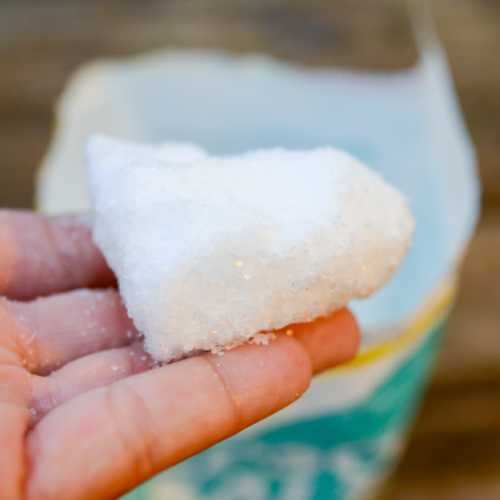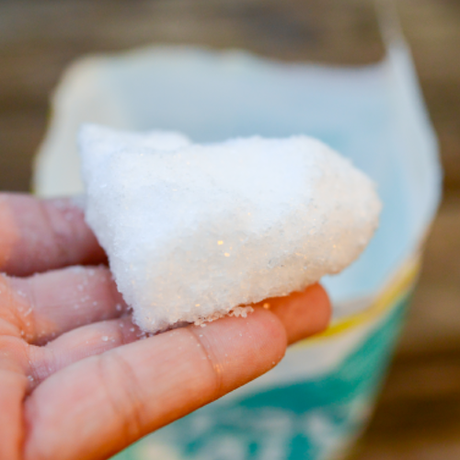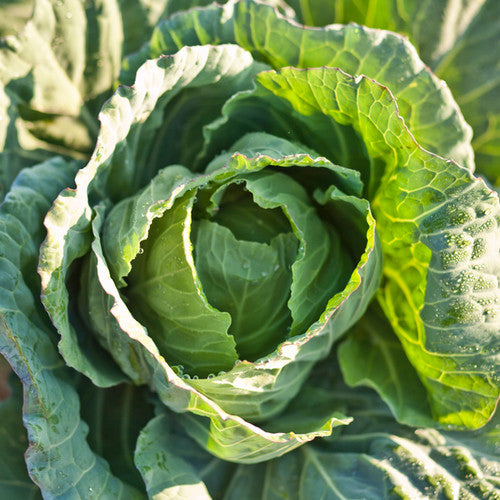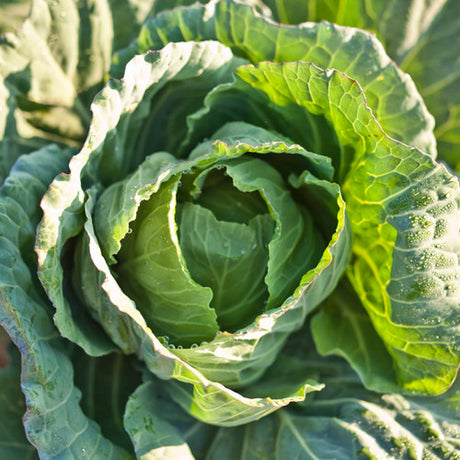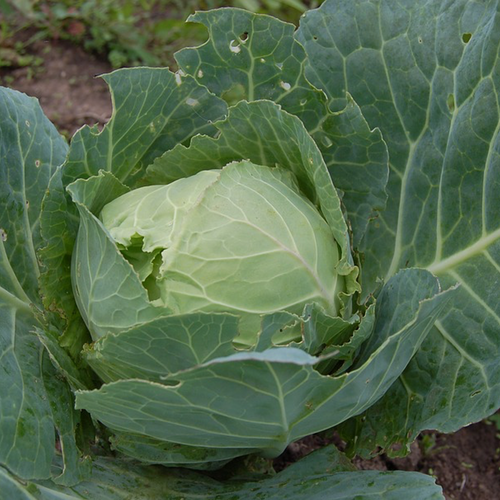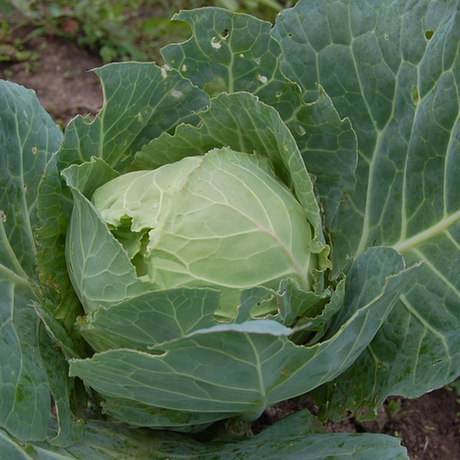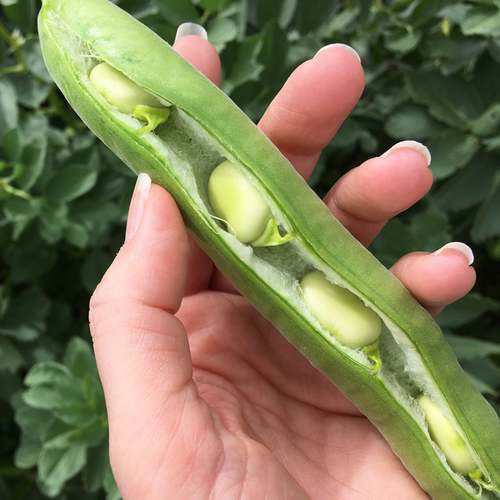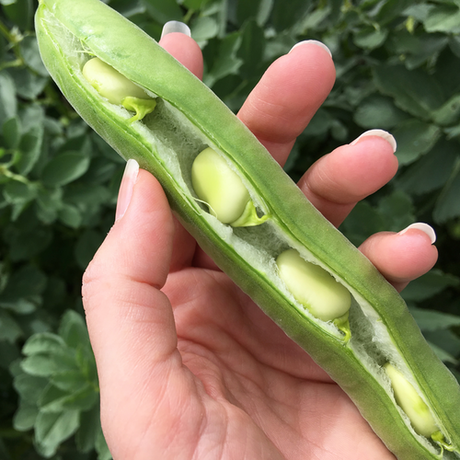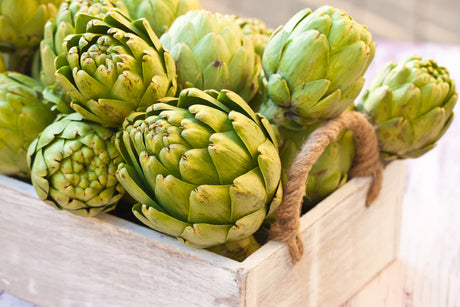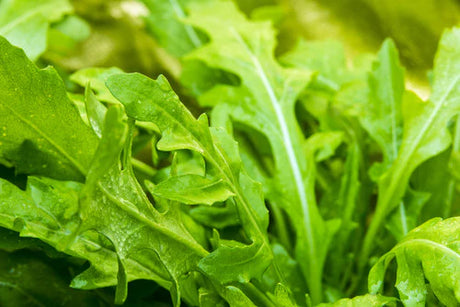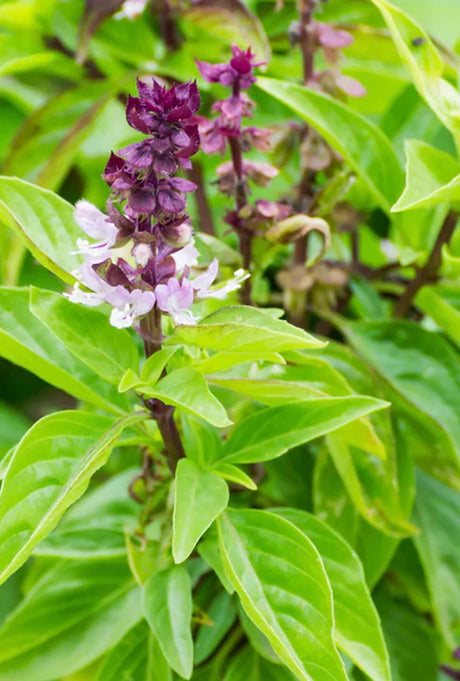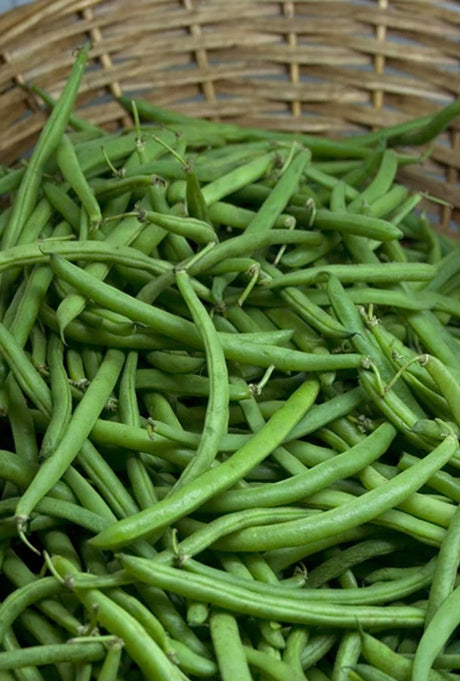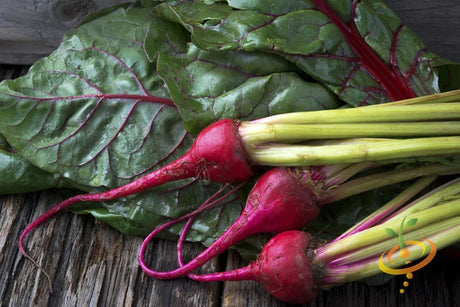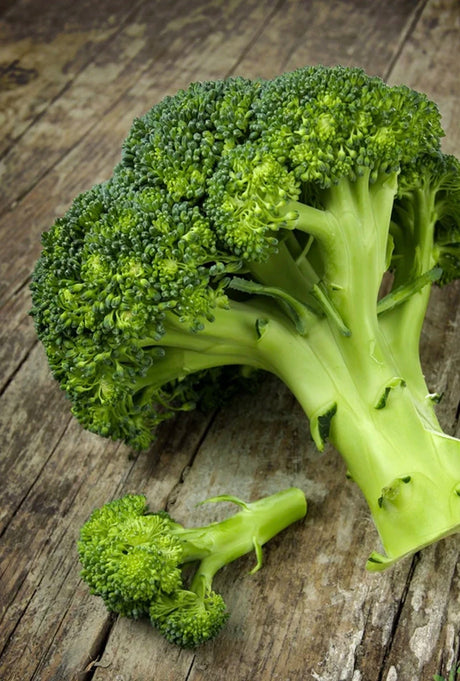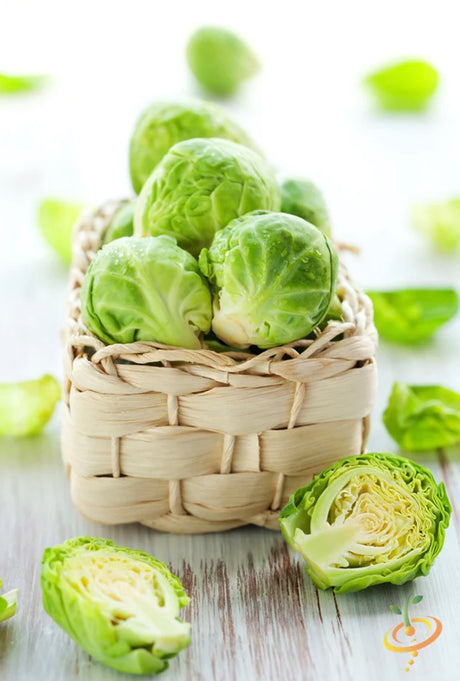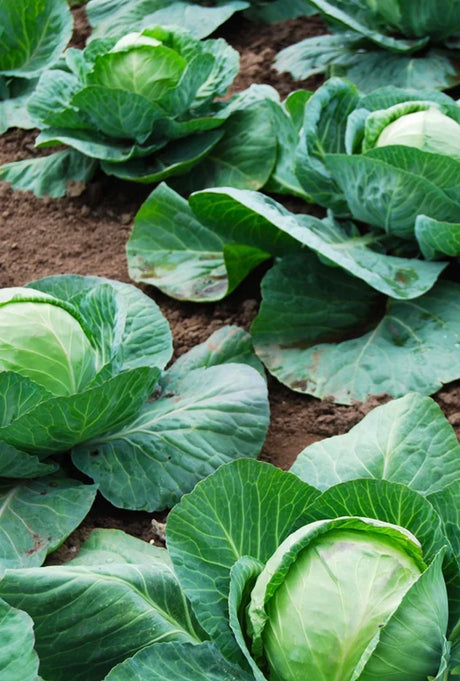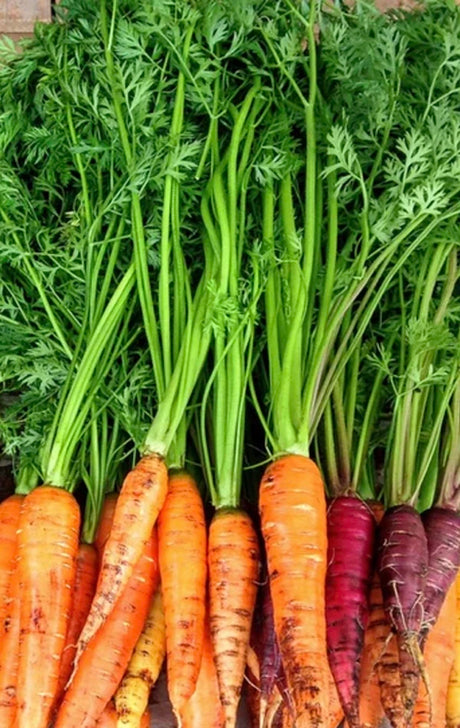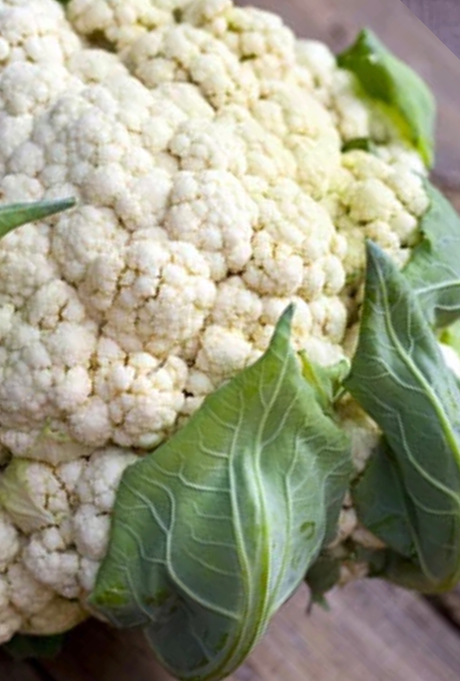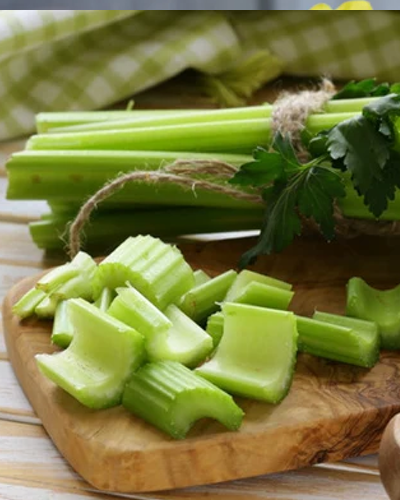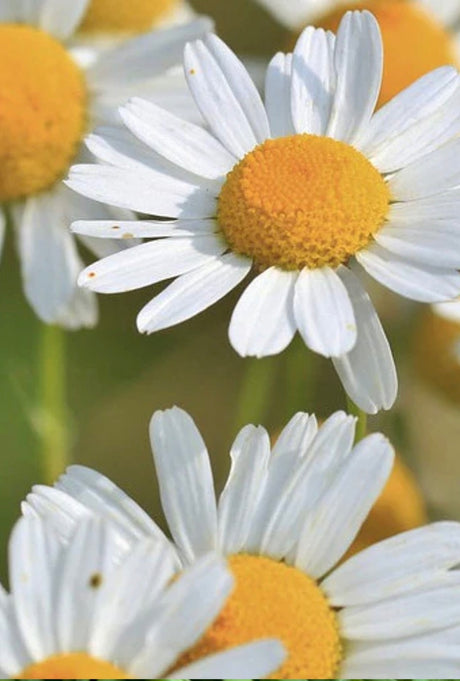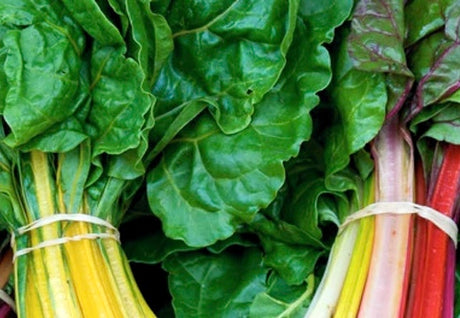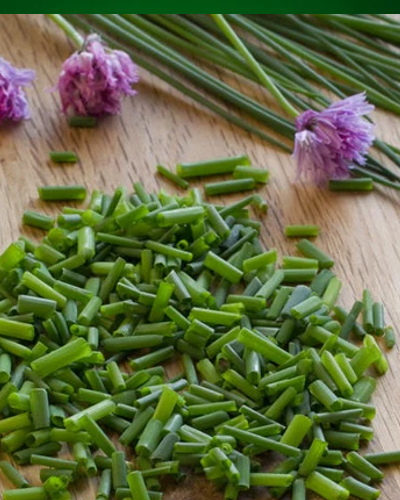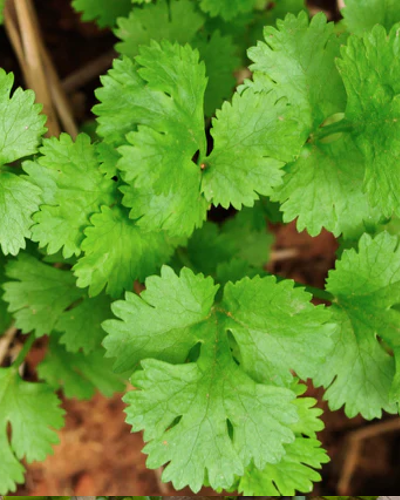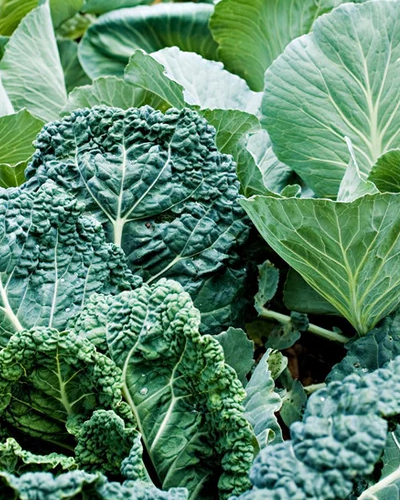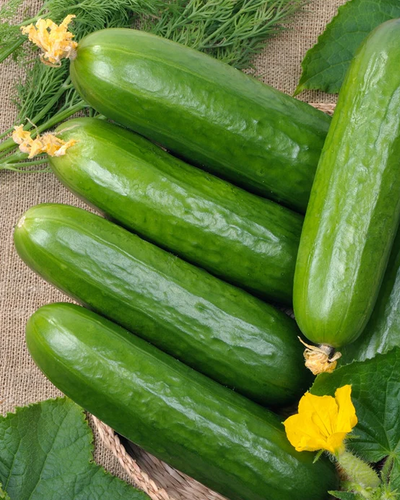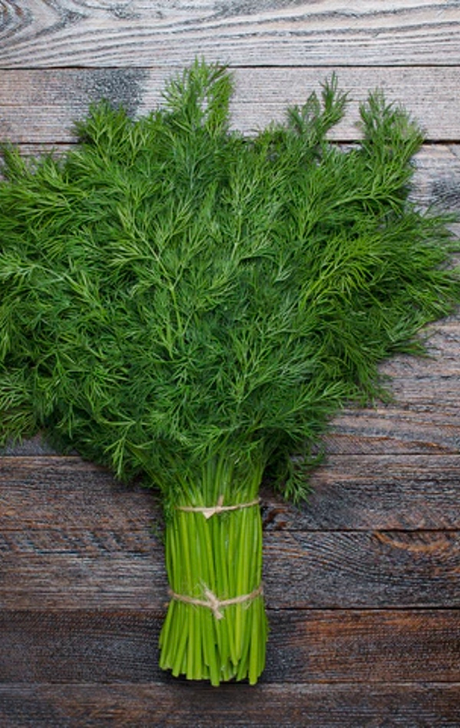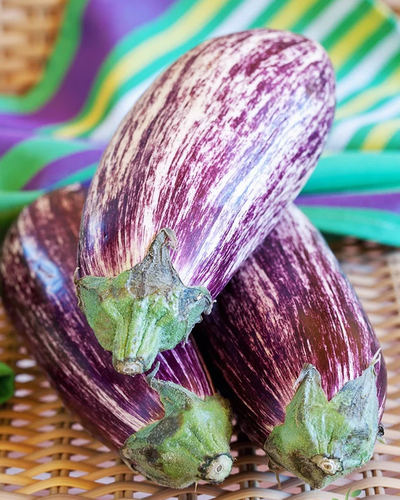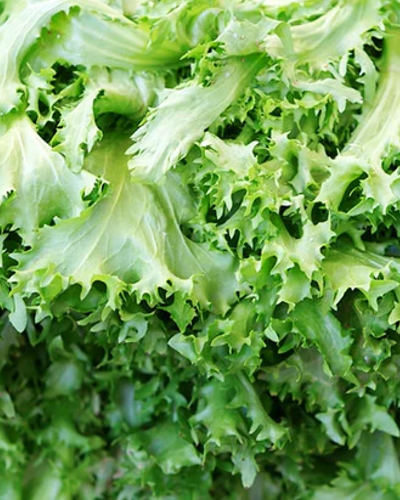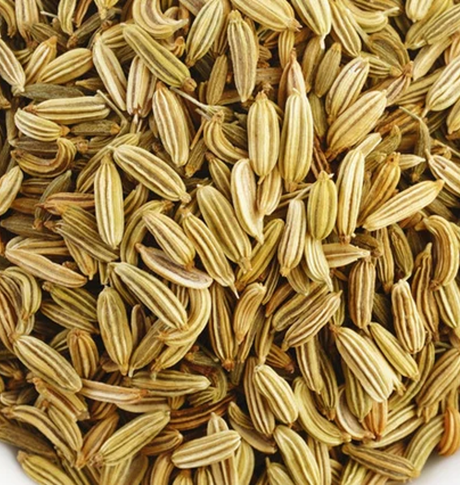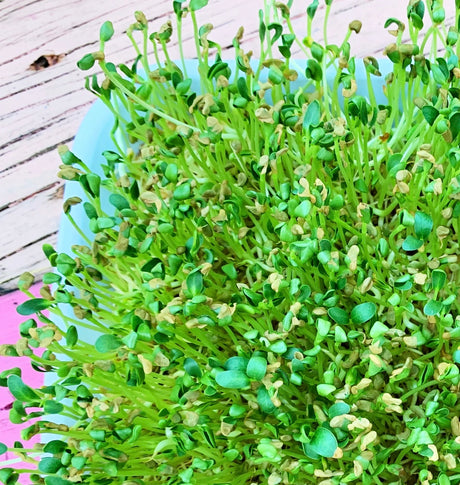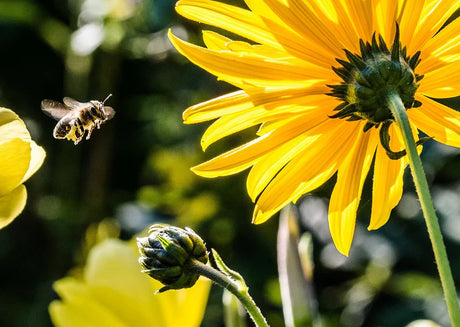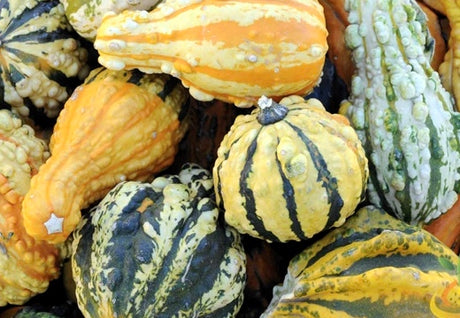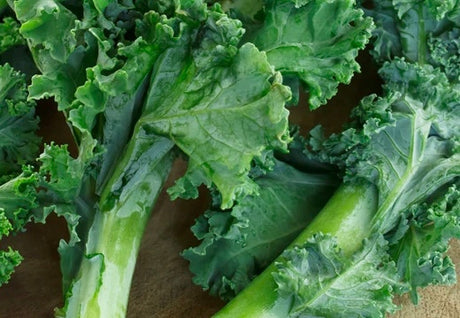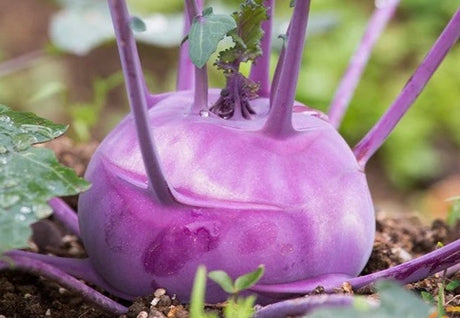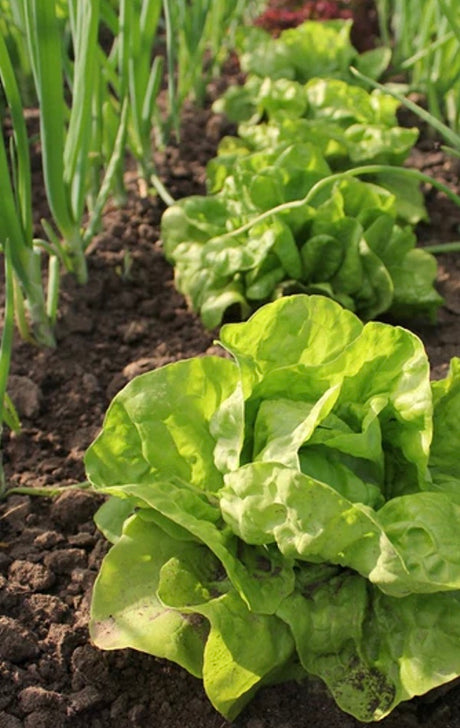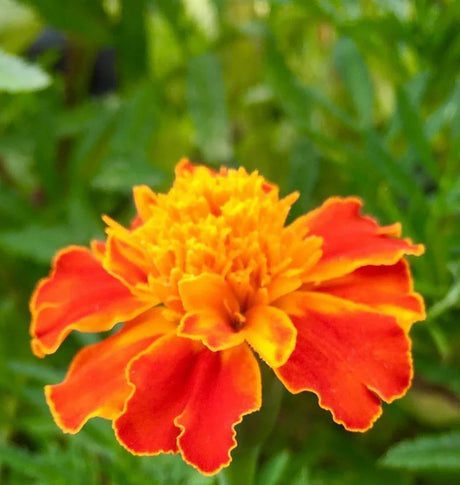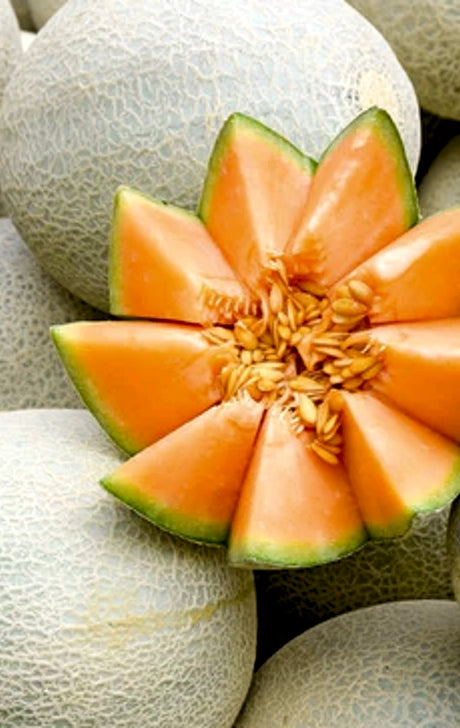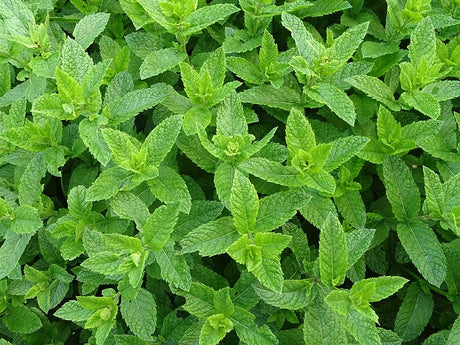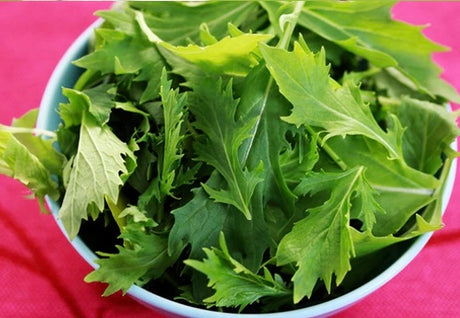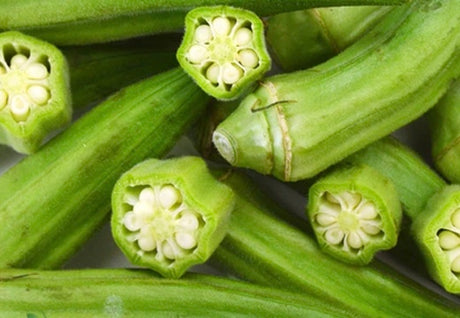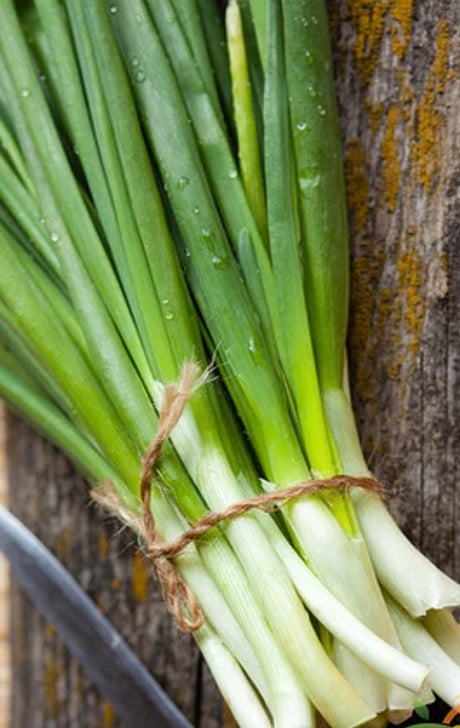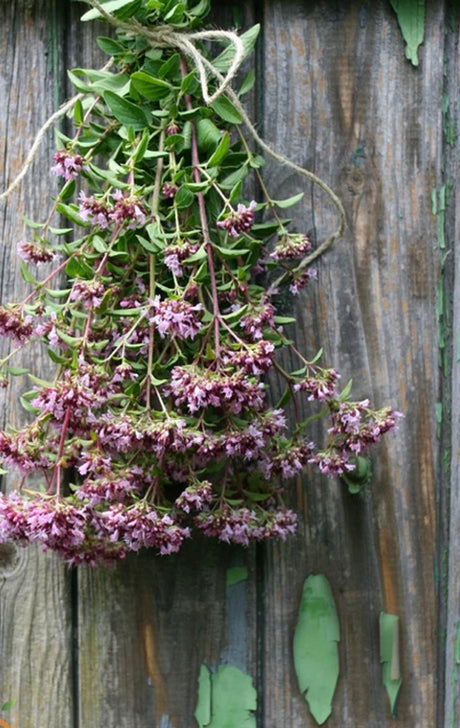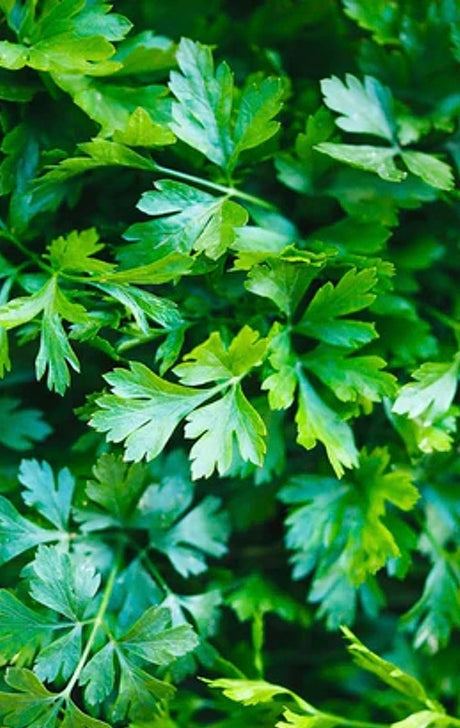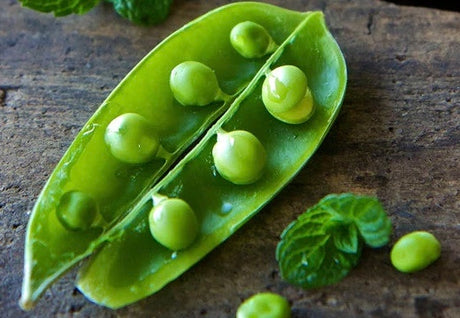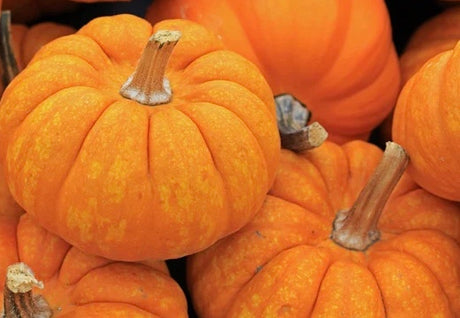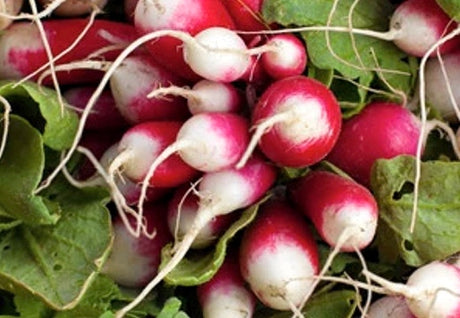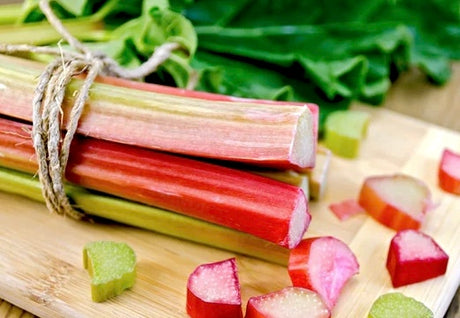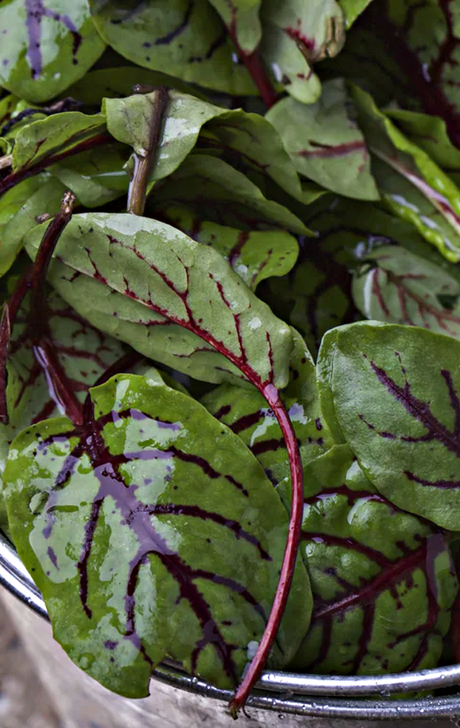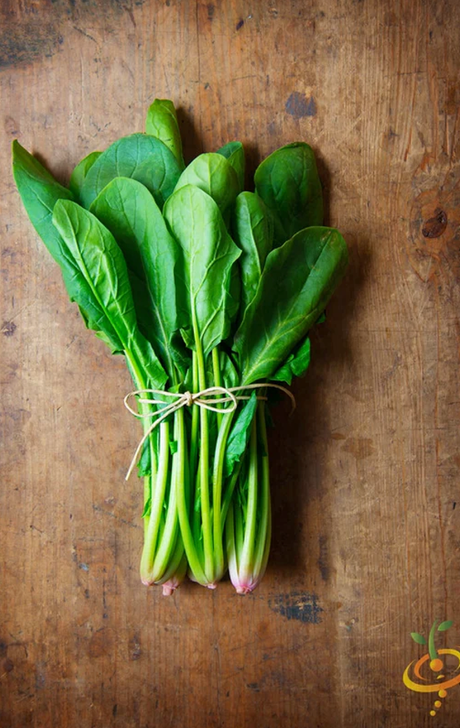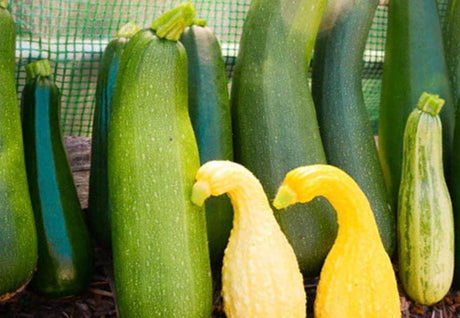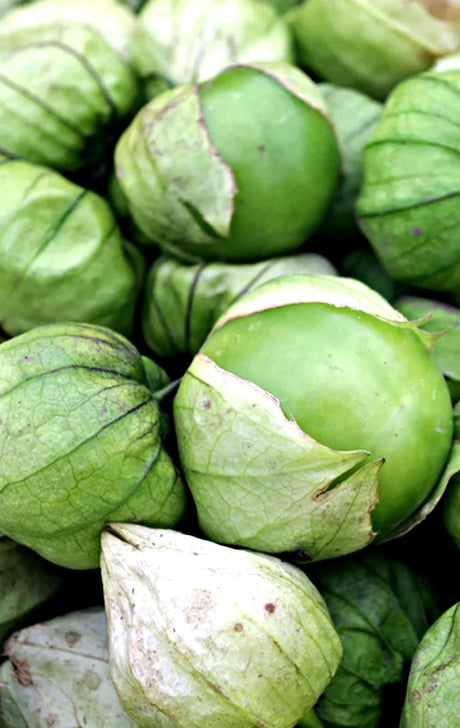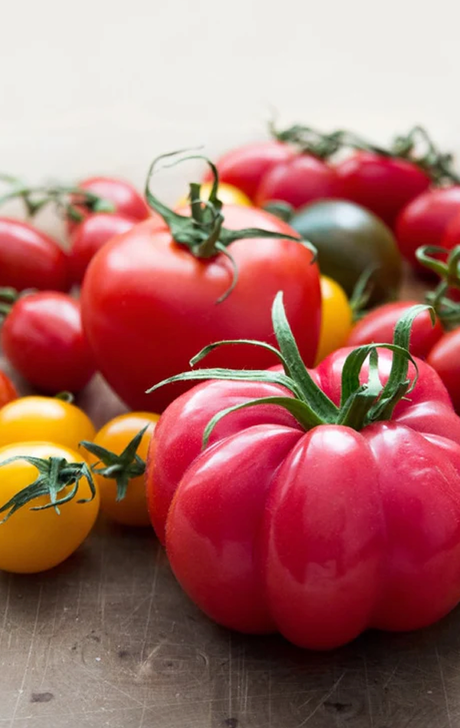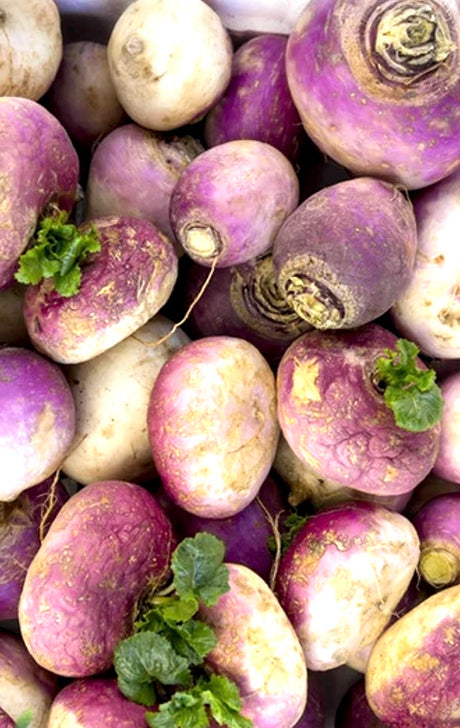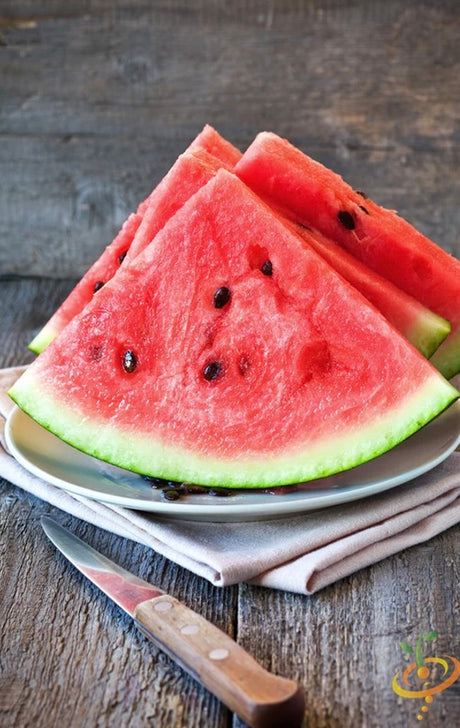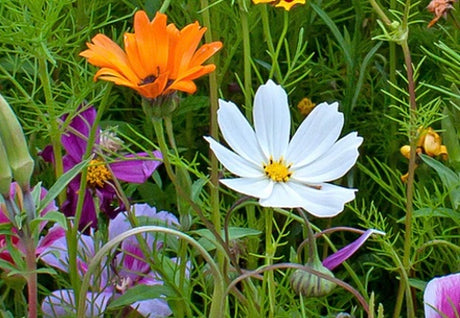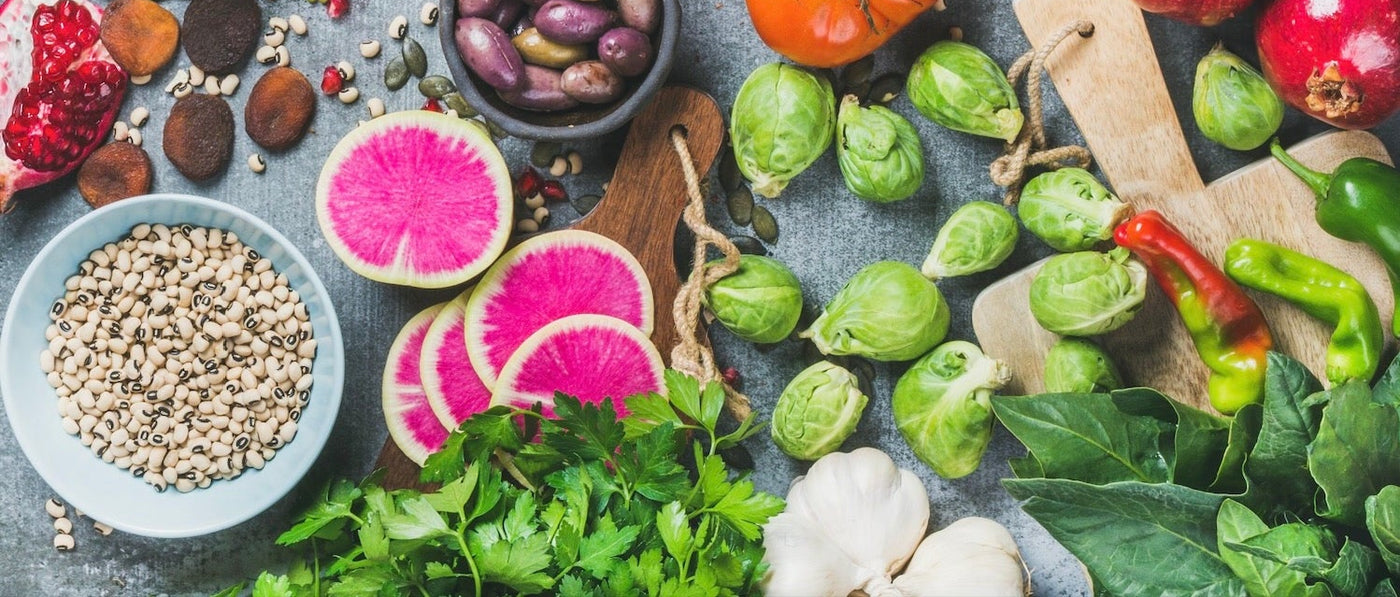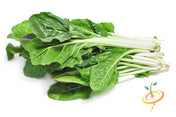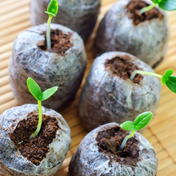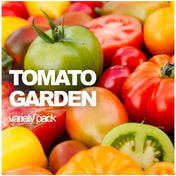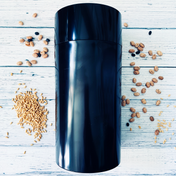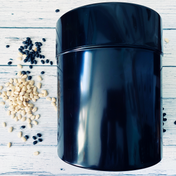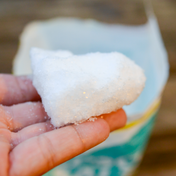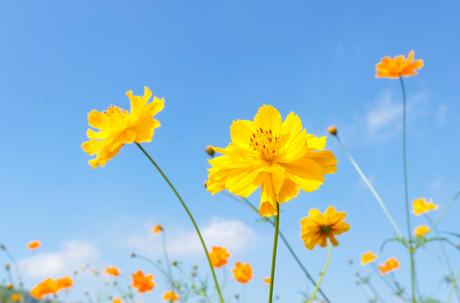Grows a very large bulb containing easy to peel cloves. The white wrappers have delicate purple stripes. This one is #1 on taste. Stores up to six months. Does well in any climate.
Onion - Crimson Forest (Bunching)
From $299 USDUnit price /UnavailableDescription

-
Crimson Forest is a rare heirloom
- Dark red, burgundy, and purple colors
- Excellent for many culinary creations
- Grows well in containers and small spaces
- Easy to grow
-
Days to Maturity | 60 days
Onion Seeds | Onions are easy to grow, have a fairly short growing period and take up little space in the garden. Plant onions 1/4 inch deep and 3 to 4 inches apart in double rows, leaving 6 to 10 inches between rows.
Click here for complete Onion grow guide
-
Crimson Forest is a rare heirloom
- From $299 USDUnit price /Unavailable
Description
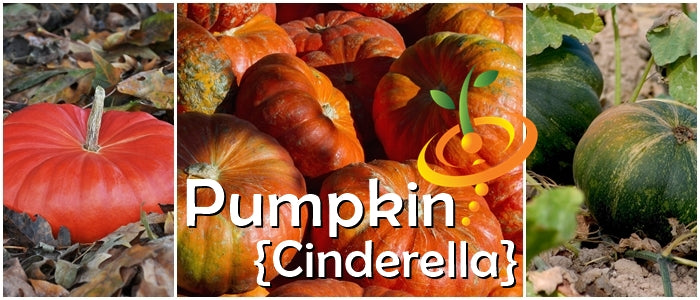
- The Cinderella is an old heirloom from France - looks just like the coach in the Cinderella fairy tale
- Plant produces medium-sized 25 lb. red/orange pumpkins
- This pumpkin has delicious flesh
- Days to Maturity | 100-110 days
Additional DetailsThe word pumpkin originates from the word pepon, which is Greek for “large melon". The French adapted this word to pompon, which the British changed to pumpion and later American colonists changed that to the word we use today, "pumpkin".
- The Cinderella is an old heirloom from France - looks just like the coach in the Cinderella fairy tale
- From $299 USDUnit price /Unavailable
Description

- The Yellow Paris is a very large pumpkin
- An old heirloom variety from France
- Days to Maturity | 100 days
Additional DetailsThe word pumpkin originates from the word pepon, which is Greek for “large melon". The French adapted this word to pompon, which the British changed to pumpion and later American colonists changed that to the word we use today, "pumpkin".
- The Yellow Paris is a very large pumpkin
- From $299 USDUnit price /Unavailable
Description

- Also known as "Slippery Snake"
- Grows long light green snake-like shaped gourds
- Grows as a long vine
- If you like to grow gourds then you'll be sure to appreciate this one
- Also known as "Slippery Snake"
Sprouts/Microgreens - Basil, Green
From $299 USDUnit price /UnavailableDescription

- Basil sprouts are extremely easy to grow!
- Ready to eat in as little as a week.
- Great addition to many culinary creations.
- Excellent flavor and fragrance.
Sprouts/Microgreens - Basil, Purple
From $299 USDUnit price /UnavailableDescription

- Basil sprouts are extremely easy to grow!
- Ready to eat in as little as a week.
- Great addition to many culinary creations.
- Excellent flavor and fragrance.
You may also be interested in: Green Basil Sprouts & Micro-Greens
Sprouts/Microgreens - Bean, Mung
From $299 USDUnit price /UnavailableDescription
These delicious sprouts are popular and common as an integral part of Asian cuisine. Mung bean sprouts are quite thick and are crunchy with a nutty taste – mild and fresh. These can be served with salads, sprinkled as crunchy toppings, used in stir-fry, or simply enjoyed by themselves.
- From $299 USDUnit price /Unavailable
Description
- (Citrullus lanatus) This is a HUGE watermelon variety that can grow up to 200 LBS!
- Very flavorful crisp bright red flesh
- The rind is striped and resistant to bruising -
Days to Maturity | 95 days
-
Best Months to Plant | [April - June] Watermelons are heat-loving plants that need lots of sun. They grow on a long vine, so make sure to give them plenty of space to roam around.
Follow SeedsNow.com's board Watermelon on Pinterest. - (Citrullus lanatus) This is a HUGE watermelon variety that can grow up to 200 LBS!
Epsom Salts Soil Fertilizer (THE BEST!)
From $299 USDUnit price /UnavailableDescription
OMRI LISTED & APPROVED for Organic Use
One of the BEST fertilizers you will come across is EPSOM salts. Just mix into your soil and see amazing results!
Read: How and Why you should add Epsom Salts to Soil Now
EPSOM salts contain both magnesium and sulfur, two very important elements required for healthy plant growth.
When used in your garden as a natural source of magnesium... roses, tomatoes and peppers will thrive! You'll see your plants develop more "bushy", and deeper in color. Some gardeners boast their plants develop more blooms which will in turn provide larger yields of fruit especially on those tomato and pepper plants.Here are some ways to use EPSOM salts in the garden:
- METHOD #1: When planting, add one tablespoon (equivalent to 1 sampler pack) of EPSOM salts into the hole you've created,
- METHOD #2: Try mixing one tablespoon of EPSOM salts into a one gallon container filled with water. Now water the roots of your plant, directly after planting. Avoid getting this mixture on the leaves
Read: How and Why you really should add Epsom Salts to to your soil Now
Read: Introduction to Fertilizers
Read: Introduction to Soil Amendements- METHOD #1: When planting, add one tablespoon (equivalent to 1 sampler pack) of EPSOM salts into the hole you've created,
Garlic - (Soft Neck) Early Purple Italian (Organic)
From $299 USDUnit price /UnavailableDescription

Quick Overview
• Organic• Best Seller!
• Early
• An excellent variety for hot climates• Mild Flavor
• Purple stripes
Details
The bulb is large and white-skinned with purple stripes and numerous small cloves. Widely grown around Gilroy, California, the "garlic capital" of the world.How to Plant Garlic
Garlic can be planted in the spring as soon as the ground can be worked, but fall planting is recommended. Bulbs will grow bigger and more flavorful when you plant them in the fall. Plant 6 to 8 weeks before your first hard frost. In southern areas, February or March can be a better time to plant.
Key Planting Info:
- Break apart cloves from bulb but keep the papery husk on each individual clove.
- Ensure soil is well-drained with plenty of organic matter. Plant in Full Sun.
- Plant 4 inches apart & 2 inches deep, in their upright position (the wide end down and pointed end facing up).
- Come springtime, shoots will begin to emerge.
Click here for a more detailed Garlic Grow Guide ->Garlic - (Soft Neck) Nootka Rose (Organic)
From $299 USDUnit price /UnavailableDescription

This heirloom garlic has medium to large bulb.
- Beautifully bright white skin with light rose-colored streaked cloves
- Very attractive for braiding.
- Excellent flavor.
- Strong flavor.
- In rich soil, cloves can lose their rosy hue.
- This variety of garlic has long shelf-life and will store well into next spring or even summer.
How to Plant Garlic
Garlic can be planted in the spring as soon as the ground can be worked, but fall planting is recommended. Bulbs will grow bigger and more flavorful when you plant them in the fall. Plant 6 to 8 weeks before your first hard frost. In southern areas, February or March can be a better time to plant.
Key Planting Info:
- Break apart cloves from bulb but keep the papery husk on each individual clove.
- Ensure soil is well-drained with plenty of organic matter. Plant in Full Sun.
- Plant 4 inches apart & 2 inches deep, in their upright position (the wide end down and pointed end facing up).
- Come springtime, shoots will begin to emerge.
Garlic - (Soft Neck) Silver Rose
From $299 USDUnit price /UnavailableDescription
This heirloom garlic has medium to large bulb.
- Rose-colored cloves in very smooth bright-white bulbs.
- Mild flavor
- Beautiful garlic to braid!
- The longest-storing garlic we sell.
- Fast-growing garlic.
- Very popular in western and southern US and in France and Italy.
How to Plant Garlic
Garlic can be planted in the spring as soon as the ground can be worked, but fall planting is recommended. Bulbs will grow bigger and more flavorful when you plant them in the fall. Plant 6 to 8 weeks before your first hard frost. In southern areas, February or March can be a better time to plant.
Key Planting Info:
- Break apart cloves from bulb but keep the papery husk on each individual clove.
- Ensure soil is well-drained with plenty of organic matter. Plant in Full Sun.
- Plant 4 inches apart & 2 inches deep, in their upright position (the wide end down and pointed end facing up).
- Come springtime, shoots will begin to emerge.
Click here for a more detailed Garlic Grow Guide ->- From $299 USDUnit price /Unavailable
Description
Mugwort, Herb
- 85 days.
- Artemisia vulgaris.
- Perennial.
- Plant produces beautiful fragrant leaves.
- Used to make tea to treat menstrual and menopausal problem.
- Stimulates and improves memory.
- Easy to grow.
Onion (Sets) - Ebenezer, White
From $299 USDUnit price /UnavailableDescription

Quick Overview
Medium sized, flat, onion with thin, unnoticeable translucent white skin with less waste when prepared. Fine, grained flesh, popular for pickling. Excellent keeper.
They are technically long day onions. However, they can be grown anywhere, down south they will be more grown like big scallions.
How to Plant Bulb Onions
Onion bulbs are quite hardy and can withstand 20° F frost. They should be set out 4-6 weeks prior to the last expected frost. When your plants arrive they should appear to be quite dry. DO NOT WET THEM NOR STICK THEIR ROOTS IN WATER. Unpack them and store them in a cool, dry place until it is time to plant. They should last about 3 weeks kept this way. Do not worry that your plants seem dry. They will "shoot" new roots and new, green tops as soon as they are planted.
- From $299 USDUnit price /Unavailable
Description

Quick Overview
Bronze yellow skin, mild, and sweet. Plant them close together if you want fast growing scallions.They are technically long day onions. However, they can be grown anywhere, down south they will be more grown like big scallions.
How to Plant Bulb Onions
Onion bulbs are quite hardy and can withstand 20° F frost. They should be set out 4-6 weeks prior to the last expected frost. When your plants arrive they should appear to be quite dry. DO NOT WET THEM NOR STICK THEIR ROOTS IN WATER. Unpack them and store them in a cool, dry place until it is time to plant. They should last about 3 weeks kept this way. Do not worry that your plants seem dry. They will "shoot" new roots and new, green tops as soon as they are planted. Onion (Sets) - Wethersfield, Red
From $299 USDUnit price /UnavailableDescription

Quick Overview
Large globe with very thin, reddish-purple colored skin.
The white flesh is very firm and tinged with pink or purple highlights.
Fine strong flavor, vigorous.They are technically long day onions. However, they can be grown anywhere, down south they will be more grown like big scallions.
How to Plant Bulb Onions
Onion bulbs are quite hardy and can withstand 20° F frost. They should be set out 4-6 weeks prior to the last expected frost. When your plants arrive they should appear to be quite dry. DO NOT WET THEM NOR STICK THEIR ROOTS IN WATER. Unpack them and store them in a cool, dry place until it is time to plant. They should last about 3 weeks kept this way. Do not worry that your plants seem dry. They will "shoot" new roots and new, green tops as soon as they are planted.Potato (Late-Season) Fingerling - Red Thumb (Organic/Heirloom)
From $299 USDUnit price /UnavailableDescription

About this variety:
- One of the best tasting of the fingerling potato varieties.
- It has rosy-buff skin with deep yellow flesh (blushed with red).
- Excellent for potato salad.
- Produces lots of medium-sized, well-clustered potatoes.
- Very good roasted over the coals.
- The tubers are long-keeping and the vines are very vigorous.
- Be careful not too overcrowd this variety.
We do not use chemicals to prevent our potatoes from sprouting. So the seed potatoes you order may have already begun to sprout when they arrive. This is okay-in fact some consider it desirable.
Garlic - (Soft Neck) Inchelium Red (Organic)
From $299 USDUnit price /UnavailableDescription
Quick Overview
• Organic• Large bulbs• Softneck
• Dense cloves
Details
From Inchelium, WA, on the Colville Indian Reservation. The bulbs are large - to 3+ inches in diameter. 8-20 cloves of good size. Mild, but lasting, flavor, with a hint of hot! Dense cloves store well. The flavor can get stronger in storage. This vigorous soft-necked variety won a Rodale taste test of 20 garlic strains - named \"Very Best of the Soft-Necks.\" Available Spring and Fall.
How to Plant Garlic
Garlic can be planted in the spring as soon as the ground can be worked, but fall planting is recommended. Bulbs will grow bigger and more flavorful when you plant them in the fall. Plant 6 to 8 weeks before your first hard frost. In southern areas, February or March can be a better time to plant.
Key Planting Info:
- Break apart cloves from bulb but keep the papery husk on each individual clove.
- Ensure soil is well-drained with plenty of organic matter. Plant in Full Sun.
- Plant 4 inches apart & 2 inches deep, in their upright position (the wide end down and pointed end facing up).
- Come springtime, shoots will begin to emerge.
Click here for a more detailed Garlic Grow Guide ->Garlic - (Soft Neck) Italian Late (Organic)
From $299 USDUnit price /UnavailableDescription
Quick Overview
• Beautiful to braid!
• Fast growing
• Softneck
Details
Light colored wrappers covering cloves which are generally fat and round. The extra-tight skin makes it a better keeper. This variety matures later than Early Italian Purple and tends to be somewhat smaller then Early Italian Purple as well. Good braiding type. Available Spring and Fall.
How to Plant GarlicGarlic can be planted in the spring as soon as the ground can be worked, but fall planting is recommended. Bulbs will grow bigger and more flavorful when you plant them in the fall. Plant 6 to 8 weeks before your first hard frost. In southern areas, February or March can be a better time to plant.
Key Planting Info:
- Break apart cloves from bulb but keep the papery husk on each individual clove.
- Ensure soil is well-drained with plenty of organic matter. Plant in Full Sun.
- Plant 4 inches apart & 2 inches deep, in their upright position (the wide end down and pointed end facing up).
- Come springtime, shoots will begin to emerge.
Click here for a more detailed Garlic Grow Guide ->Potato (Mid-Season) - Russet Pioneer (Organic/Heirloom)
From $299 USDUnit price /UnavailableDescription
-
Quick Overview
• Mid Season
• Medium YieldDetails
Mid Season. Blocky russet type. Long oval even tubers. Best ways to cook, roasting, frying, & baking. High yielder. Medium-long storage.
NOTE: We do not use chemicals to prevent our potatoes from sprouting. So the seed potatoes you order may have already begun to sprout when they arrive. This is okay-in fact some consider it desirable.
-
Cabbage - Early Jersey Wakefield
From $299 USDUnit price /UnavailableDescription
- These seeds produces good yields of 2 lb heads of cabbage in the shape of a cone.
- Excellent flavor and very sweet.
- Open pollinated heirloom variety.
-
Days to Maturity | 65-75 days
-
Cabbage Seeds | ❄️ Cabbage is an annual cool-season crop, hardy to frost and light freezes. A smaller cabbage head has better flavor and can stay in the field longer without splitting. To keep them small, plant close together or, when the head is almost full, give the plant a sharp twist to break up the roots. 😀 Cabbage is a wide spreading foliage plant with handsome leaves that form a tight, hard ball head on a strong central stem. Young plants may bolt if grown at 50F for a long time; however mature plants of late varieties improve flavor in cold weather.
Click here for complete Cabbage grow guide
Did you know? Cabbage is an excellent source of vitamin C! It also contains significant amounts of glutamine, an amino acid that has anti-inflammatory properties. Cabbage can also be included in dieting programs, as it is a low calorie food.
- These seeds produces good yields of 2 lb heads of cabbage in the shape of a cone.
Sprouts/Microgreens - Bean, Garbanzo (Chickpea)
From $299 USDUnit price /UnavailableDescription
Classic garbanzos (chickpea) for sprouts and hummus. Learn how to make your own hummus >
Sprouts/Microgreens - Sunflower
From $299 USDUnit price /UnavailableDescription
Baby sunflower micro-greens are delicious! If you've never tried sprouting sunflowers they make a great addition to salads. They are extremely rich in essential nutrients.
- From $299 USDUnit price /Unavailable
Description
The Pumpkin Wee Bee Little variety is a compact and productive cultivar that has gained popularity among gardeners for its unique characteristics and suitability for small spaces. This variety is particularly well-suited for urban gardening, container gardening, and small garden plots, making it an excellent choice for both novice and experienced gardeners.
One of the most notable features of the Pumpkin Wee Bee Little is its size. Typically, the fruits reach a diameter of about 3 to 4 inches, making them ideal for decorative purposes, culinary use, or as part of a harvest display. The plants themselves are bushy and compact, usually growing to a height of 12 to 18 inches, which allows for efficient space utilization in the garden.
- Mini pumpkins about the size of a grapefruit
- Weigh about 14 ounces each pumpkin
- Days to Maturity | 90 days
Additional DetailsThe word pumpkin originates from the word pepon, which is Greek for “large melon". The French adapted this word to pompon, which the British changed to pumpion and later American colonists changed that to the word we use today, "pumpkin".
- Mini pumpkins about the size of a grapefruit
- From $299 USDUnit price /Unavailable
Description
-
These seeds produces a medium-to-large hard round heads of cabbage
- Suitable for spring, summer, and fall crops
- Cold hardy
- Stores well. Suitable for home gardens and market growers
- Perfect for Kraut recipes
-
Days to Maturity | 90 days
-
Cabbage Seeds | ❄️ Cabbage is an annual cool-season crop, hardy to frost and light freezes. A smaller cabbage head has better flavor and can stay in the field longer without splitting. To keep them small, plant close together or, when the head is almost full, give the plant a sharp twist to break up the roots. 😀 Cabbage is a wide spreading foliage plant with handsome leaves that form a tight, hard ball head on a strong central stem. Young plants may bolt if grown at 50F for a long time; however mature plants of late varieties improve flavor in cold weather.
Click here for complete Cabbage grow guide
Additional Details
Did you know? Cabbage is an excellent source of vitamin C! It also contains significant amounts of glutamine, an amino acid that has anti-inflammatory properties. Cabbage can also be included in dieting programs, as it is a low calorie food.
-
These seeds produces a medium-to-large hard round heads of cabbage
Tomato - Calypso (Indeterminate)
From $299 USDUnit price /UnavailableDescription
The Calypso Tomato is often referred to as a “common salad tomato". Calypso is tolerant of heat and humidity, and great for Southern gardens.
- Common tomato flavor
- Common tomato color
- Heat tolerant
- Great for Southern gardens
SEED PLANTING TIPS
- Botanical name: Solanum lycopersicum
- Growth type: Indeterminate, trellis support, regular pruning
- Tomato size: Medium
- Depth to plant seeds: .25" deep
- Spacing between plants: 24" apart
- Spacing between rows: 36"-48" apart
- Days to germinate (sprout): 7-14 days
- Germination soil temps: 75F-95F
- Soil needs: 6.0-6.5 pH
- Sun needs: Full sun
- Frost hardy: No
- Planting season: Spring, summer
- # of plants per sq. ft.: Appx. 1 plant per 2 sq. ft.
- Days to maturity: 75-80 days
Good companion plants: Basil, Borage, Onion, Parsley, Pepper
Tomato - Oxheart, Orange (Indeterminate)
From $299 USDUnit price /UnavailableDescription
The Orange Oxheart Tomato is what you call eye candy. High yields of deep orange heart-shaped fruits glowing against a backdrop of emerald green leaves provide a stunning visual in any garden. They’re tasty, too. Meaty, fruity, juicy slicers grow and ripen all summer long, giving you more time for more eyefuls.
You may also like: Pink Oxheart Tomatoes ⟐ Yellow Oxheart Tomatoes- Sweet and juicy
- Small seed core
- High yields
- Good fresh and cooked
SEED PLANTING TIPS
- Botanical name: Solanum lycopersicum
- Growth type: Indeterminate, trellis support, regular pruning
- Tomato size: Large (1-2 lbs.)
- Depth to plant seeds: .25" deep
- Spacing between plants: 24" apart
- Spacing between rows: 36"-48" apart
- Days to germinate (sprout): 7-14 days
- Germination soil temps: 75F-95F
- Soil needs: 6.0-6.5 pH
- Sun needs: Full sun
- Frost hardy: No
- Planting season: Spring, summer
- # of plants per sq. ft.: Appx. 1 plant per 2 sq. ft.
- Days to maturity: 75-85 days
Click here to view our full Tomato grow guide
Good companion plants: Basil, Borage, Onion, Parsley, Pepper
Squash (Winter) - Hubbard, Chicago Warted
From $299 USDUnit price /UnavailableDescription
-
The Chicago Warted Hubbard Warted squash is popular green skinned squash with orange flesh
- Very sweet and full of flavor - perfect for pies, canning, and processing.
-
Ideal for any sized garden and easy to grow.
-
Days to Maturity | 110 days
Additional DetailsThough considered a vegetable in cooking, botanically speaking, squash is a fruit (being the receptacle for the plant's seeds). Squash can be served fresh (in salads) and cooked (squash stuffed with meat, fried squash, baked squash).
-
The Chicago Warted Hubbard Warted squash is popular green skinned squash with orange flesh
Squash (Winter) - Hubbard, Green
From $299 USDUnit price /UnavailableDescription
- The True Green Hubbard squash is popular 10 lb long dark bronze-green skinned squash
- Orange/Yellow flesh
- Very sweet and full of flavor - perfect for pies and canning
-
Ideal for any sized garden and easy to grow
-
Days to Maturity | 110 days
Additional Details
Though considered a vegetable in cooking, botanically speaking, squash is a fruit (being the receptacle for the plant's seeds). Squash can be served fresh (in salads) and cooked (squash stuffed with meat, fried squash, baked squash).
- From $299 USDUnit price /Unavailable
Description
Blueberry seeds from a certified organic blueberry farm in Kentucky, USA.
Northern and Southern blueberry seed mix.BLUEBERRY PLANTS ARE EASY TO GROW FROM SEEDS
These seeds have been stratified to get the highest possible germination rate. They are NON GMO.
Blueberry seeds are slow germinators, the first seeds will probably start to germinate in about a month, and finish germinating over the next 2-3 months. Blueberries should be started in a separate container from other varieties that germinate quickly because they can take longer to sprout up.
Cover Crop - Fall & Winter Rye
From $299 USDUnit price /UnavailableDescription
Quick Overview
• Perennial
• Suppress weeds
Details
Very hardy, valued for its ability to break up hard pan soils with a profusion of roots and root hairs. Suppresses weeds, adaptable to a wide range of soil and climate conditions. Can plant from early spring until the ground freezes as a winter cover crop. Plant in fall with winter peas for nitrogen, organic matter and weed suppression. Planting rate: 3lbs per 1,000 sq ft;- From $299 USDUnit price /Unavailable
Description
The Aguadulce Fava Bean is a cold hardy broadbean that can also take a bit of heat. This 4' bush-type plant produces charming white and black flowers that turn into huge green pods with huge, creamy, nutty, protein-rich beans inside. Known as a dried bean, it’s also delicious when eaten fresh from the pod. With its edible leaves, high yields, and nitrogen-fixing properties, this is a gorgeous performer for fall and winter gardens in all grow zones.
- Easy to grow
- Cold hardy to 20 degrees F
- Nitrogen fixer
- Great for winter gardens
SEED PLANTING TIPS
- Botanical name: Vicia faba
- Depth to plant seeds: 2" deep
- Spacing between plants: 4"-6" apart
- Spacing between rows: 18"-24" apart
- Days to germinate (sprout): 10-14 days
- Germination soil temps: 50F-65F
- Soil needs: 6.0-7.0 pH
- Sun needs: Full sun
- Frost hardy: Yes
- Planting season: Spring, fall, winter
- # of plants per sq. ft.: Appx. 2-4 plants per sq. ft.
- Days to maturity: 75-80 days when spring sown, 180 days when fall sown
Click here to view our full Bean grow guide
Good companion plants: Cabbage, Carrot, Lettuce, Parsley, Rosemary
Garlic - (Hard Neck) Porcelain German
From $299 USDUnit price /UnavailableDescription
Quick Overview
• Grows well in any climate• Hardneck
• Strong flavor
Details
How to Plant Garlic
Garlic can be planted in the spring as soon as the ground can be worked, but fall planting is recommended. Bulbs will grow bigger and more flavorful when you plant them in the fall. Plant 6 to 8 weeks before your first hard frost. In southern areas, February or March can be a better time to plant.
Key Planting Info:
- Break apart cloves from bulb but keep the papery husk on each individual clove.
- Ensure soil is well-drained with plenty of organic matter. Plant in Full Sun.
- Plant 4 inches apart & 2 inches deep, in their upright position (the wide end down and pointed end facing up).
- Come springtime, shoots will begin to emerge.
Click here for a more detailed Garlic Grow Guide ->Garlic - (Hard Neck) Russian Red
From $299 USDUnit price /UnavailableDescription
Quick Overview
• Hard neck
• RocamboleDetails
Red Russian is a rocambole garlic that was brought to the Pacific Northwest by Russian immigrants in the 1900s. It can withhold very cold winter temperatures while being grown in the garden. Early-Mid Season and averages 6-7 cloves per bulb.
How to Plant Garlic
Garlic can be planted in the spring as soon as the ground can be worked, but fall planting is recommended. Bulbs will grow bigger and more flavorful when you plant them in the fall. Plant 6 to 8 weeks before your first hard frost. In southern areas, February or March can be a better time to plant.
Key Planting Info:
- Break apart cloves from bulb but keep the papery husk on each individual clove.
- Ensure soil is well-drained with plenty of organic matter. Plant in Full Sun.
- Plant 4 inches apart & 2 inches deep, in their upright position (the wide end down and pointed end facing up).
- Come springtime, shoots will begin to emerge.
Click here for a more detailed Garlic Grow Guide ->Garlic - (Hard Neck) Porcelain Musik
From $299 USDUnit price /UnavailableDescription
Quick Overview
• Porcelain• Hard-neck
• Very cold hardy
Details
A favorite, Musik is a porcelain type hardneck garlic with a rich flavor and medium to hot heat. Containing 4 to 8 easy to peel buff-colored cloves streaked with red highlights, it has excellent yields and is very cold hardy. Stores for 6 months or more.
Porcelain Musik is a hardneck variety that is well-suited for garden cultivation in temperate regions. It produces large, firm bulbs with a rich, complex flavor favored by chefs and gardeners alike. This variety develops a robust scape and exhibits excellent cold tolerance, allowing it to mature fully in cooler climates. Its natural resistance to diseases and pests ensures a dependable crop. Porcelain Musik’s cloves are easy to peel and store well, making it an outstanding choice for gardeners seeking premium garlic with superior taste and reliability.
How to Plant Garlic
Garlic can be planted in the spring as soon as the ground can be worked, but fall planting is recommended. Bulbs will grow bigger and more flavorful when you plant them in the fall. Plant 6 to 8 weeks before your first hard frost. In southern areas, February or March can be a better time to plant.
Key Planting Info:
- Break apart cloves from bulb but keep the papery husk on each individual clove.
- Ensure soil is well-drained with plenty of organic matter. Plant in Full Sun.
- Plant 4 inches apart & 2 inches deep, in their upright position (the wide end down and pointed end facing up).
- Come springtime, shoots will begin to emerge.
Click here for a more detailed Garlic Grow Guide ->Garlic - (Hard Neck) Chesnok Red
From $299 USDUnit price /UnavailableDescription
Quick Overview
• Hard neck
• Good for baking
Details
A very large bulb that contains 9-10 nicely colored, easy-to-peel cloves. Especially good for baking because it holds its shape, and keeps its delightful aroma. Originated in the country of Georgia.
Garlic Chesnok Red is a hard-neck variety prized for its rich, robust flavor and easy peeling. Ideal for cooler climates, it produces large, plump cloves enclosed in a deep red-purple skin. Its sturdy neck supports scapes that can be harvested for a milder garlic taste. This cultivar offers excellent storage capability, making it a reliable choice for long-term use. Perfect for both culinary and medicinal applications, Chesnok Red thrives in well-drained soil with consistent moisture, requiring moderate care to yield a bountiful harvest.
How to Plant Garlic
Garlic can be planted in the spring as soon as the ground can be worked, but fall planting is recommended. Bulbs will grow bigger and more flavorful when you plant them in the fall.
Key Planting Info:
- Break apart cloves from bulb but keep the papery husk on each individual clove.
- Ensure soil is well-drained with plenty of organic matter. Plant in Full Sun.
- Plant 4 inches apart & 2 inches deep, in their upright position (the wide end down and pointed end facing up).
- Come springtime, shoots will begin to emerge.
Click here for a more detailed Garlic Grow Guide ->Garlic - (Hard Neck) Spanish Roja
From $299 USDUnit price /UnavailableDescription
Quick Overview
• Hard neck
• Rocambole
Details
Gourmet garlic famous for flavor! Light purple streaks on 7-13 easy-to-peel cloves. Suited to colder climates. May not yield well where winters are too mild. Very popular with market gardeners and restaurants. Brought to the Northwest before 1900; often called “Greek Blue”.
How to Plant Garlic
Garlic can be planted in the spring as soon as the ground can be worked, but fall planting is recommended. Bulbs will grow bigger and more flavorful when you plant them in the fall.
Key Planting Info:
- Break apart cloves from bulb but keep the papery husk on each individual clove.
- Ensure soil is well-drained with plenty of organic matter. Plant in Full Sun.
- Plant 4 inches apart & 2 inches deep, in their upright position (the wide end down and pointed end facing up).
- Come springtime, shoots will begin to emerge.
Click here for a more detailed Garlic Grow Guide ->Garlic - (Hard Neck) German, Red
From $299 USDUnit price /UnavailableDescription
Quick Overview
• Grows well in most any climate.• Hard neck
• Strong flavor
Details
This large bright purple bulb contains 8-12, extra easy-to-peel, round, light brown cloves with some purple at the base. Flavor is strong, hot, and spicy. Keeps moderately well when properly cured and stored. Can be grown in mild climates; However, develops better quality and size where winters are cold. Color will become brighter if it is stressed by too much water.
How to Plant Garlic
Garlic can be planted in the spring as soon as the ground can be worked, but fall planting is recommended. Bulbs will grow bigger and more flavorful when you plant them in the fall. Plant 6 to 8 weeks before your first hard frost. In southern areas, February or March can be a better time to plant.
Key Planting Info:
- Break apart cloves from bulb but keep the papery husk on each individual clove.
- Ensure soil is well-drained with plenty of organic matter. Plant in Full Sun.
- Plant 4 inches apart & 2 inches deep, in their upright position (the wide end down and pointed end facing up).
- Come springtime, shoots will begin to emerge.
Click here for a more detailed Garlic Grow Guide ->- From $299 USDUnit price /Unavailable
Description
Quick Overview
• A favorite amongst chefs• Easy to peel• Hard neck
• Strong, hot and full flavoredDetails
This hard neck packs a punch! Strong, hot and full flavored, Svea is perfect for baking and is a favorite with chefs. Fat, purple streaked, easy to peel cloves per bulb. Thrives in colder climates, good storage.
Svea is a robust variety prized for its strong flavor and reliable growth in cooler climates. This hard-neck garlic produces large cloves with easy-to-peel skins, ideal for culinary use. Its sturdy neck supports the formation of a scape, signaling optimal harvest time. Svea thrives in well-drained soils and benefits from a cold dormant period, making it well-suited for gardeners seeking a hardy, flavorful garlic that stores well through the winter months.
How to Plant Garlic
Garlic can be planted in the spring as soon as the ground can be worked, but fall planting is recommended. Bulbs will grow bigger and more flavorful when you plant them in the fall. Plant 6 to 8 weeks before your first hard frost. In southern areas, February or March can be a better time to plant.
Key Planting Info:
- Break apart cloves from bulb but keep the papery husk on each individual clove.
- Ensure soil is well-drained with plenty of organic matter. Plant in Full Sun.
- Plant 4 inches apart & 2 inches deep, in their upright position (the wide end down and pointed end facing up).
- Come springtime, shoots will begin to emerge.
Click here for a more detailed Garlic Grow Guide -> - From $299 USDUnit price /Unavailable
Description
Slightly tangy lemon flavor which adds zest to salads and is especially good with fish. The leaves grow up to 8" long and can also be cooked like spinach or even used in soups. Sure to be your new favorite.
55 days to maturity
Zinnia, Orange King Flowers seeds
From $299 USDUnit price /UnavailableDescription
The Orange King Zinnia (Zinnia elegans) is a tender annual with a long 3-month blooming period. Produces huge 4"-5" double blossoms with small, oval mandarin-orange petals around a dark center. Grows 2'-3' tall on sturdy stems with lance-shaped foliage. Zingy as a long-lasting cut flower in a bouquet or vase.
- Life cycle: Annual
- Bloom season: Spring, summer, fall
- Attracts: Bees, butterflies, and other pollinators
- Flower meaning: Acclaim, affection, ambition, endurance, farewell, friendship, family bonds, power, remembrance, strength
SEED PLANTING TIPS
- Botanical name: Zinnia elegans
- Hardiness zones: 2-11
- Planting season: Spring, summer
- Days to maturity: 60-70 days
- Cold stratify: No
- Depth to plant seeds: 1/4" deep
- Spacing between plants: 12"-18" apart
- Days to germinate (sprout): 5-7 days
- Germination soil temps: 70F-75F
- Soil types: Sandy, loamy, rich, moist, well-drained
- Soil pH: 5.5-7.5
- Water needs: Average
- Sun needs: Full sun
- Frost tolerant: No
- Drought tolerant: Yes
- Deer resistant: Yes
- From $299 USDUnit price /Unavailable
Description
The Foxglove flower (Digitalis purpurea) is a dramatic biennial. Produces towering 2'-3' spires of bell-shaped blossoms in shades of pink, purple, and white, often with contrasting speckles. Grows 3'-5' tall on sturdy stems with lance-shaped foliage. Perfect for a cottage garden.
Compounds found in the leaves are used to make the heart drug Digoxin, but the entire plant is poisonous and should not be ingested.
- Life cycle: Biennial
- Bloom season: Spring, summer
- Attracts: Birds, hummingbirds, bees, butterflies, and other pollinators
- Flower meaning: Ambition, creativity, energy, insincerity, intuition, pride
SEED PLANTING TIPS
- Botanical name: Digitalis purpurea
- Hardiness zones: 4-9
- Planting season: Spring, summer, fall
- Days to maturity: 2nd year
- Cold stratify: Yes
- Depth to plant seeds: Lightly cover - seeds need light to germinate
- Spacing between plants:18"-24" apart
- Days to germinate (sprout): 20-30 days
- Germination soil temps: 65F-70F
- Soil types: Loamy, rich, well-drained
- Soil pH: 5.5-6.5
- Water needs: Average
- Sun needs: Full sun, part shade
- Frost tolerant: Yes
- Drought tolerant: No
- Deer resistant: Yes
- From $299 USDUnit price /Unavailable
Description
The heat- and drought-tolerant, frost-hardy perennial Blue Flax (Linum perenne) produces small 1" light blue five-petal blossoms on 2'-3' wiry stems with delicate foliage. The flower lasts only for a day, opening at dawn and dropping its petals by mid-day. And then another blooms tomorrow.
- Life cycle: Herbaceous perennial
- Bloom season: Spring, summer
- Attracts: Bees, butterflies, and other pollinators
- Flower meaning: Creativity, domestication, purity, virtue, wisdom
SEED PLANTING TIPS
- Botanical name: Linum perenne
- Hardiness zones: 4-9
- Planting season: Spring
- Days to maturity: 2nd year
- Cold stratify: Yes
- Depth to plant seeds: Lightly cover - seeds need light to germinate
- Spacing between plants: 12"-18" apart
- Days to germinate (sprout): 7-10 days
- Germination soil temps: 65F-75F
- Soil types: Sandy, loamy, well-drained
- Soil pH: 5.5-7.5
- Water needs: Average
- Sun needs: Full sun, part shade
- Frost tolerant: Yes
- Drought tolerant: Yes
- Deer resistant: No
- From $299 USDUnit price /Unavailable
Description
The Arroyo Lupine (Lupinus succulentus) is a fast growing annual. It’s in the legume family, so it fixes nitrogen in the soil and is a great companion plant or cover crop for the vegetable garden. Produces dense spires of bright blue pea-sized blossoms with pink or white tips. Grows 2'-4' tall on sturdy stems with daisy-like palmate foliage. Put a few in a pot or plant in wide bands for a striking effect.
If consumed in large quantities, seeds can be toxic to people, pets, and livestock.
- Life cycle: Annual
- Bloom season: Spring, summer
- Attracts: Hummingbirds, birds, bees, butterflies, and other pollinators
- Flower meaning: Abundance, change, growth
SEED PLANTING TIPS
- Botanical name: Lupinus succulentus
- Hardiness zones: 3-7
- Planting season: Spring, fall
- Days to maturity: 1st to 2nd year
- Cold stratify: No
- Depth to plant seeds: Lightly cover - seeds need light to germinate
- Spacing between plants: 12"-24" apart
- Days to germinate (sprout): 15-75 days
- Germination soil temps: 55F-70F
- Soil types: Clay, sandy, loamy, rocky, moist, well-drained
- Soil pH: 6.1-7.8
- Water needs: Average
- Sun needs: Full sun, part shade
- Frost tolerant: Yes
- Drought tolerant: Yes
- Deer resistant: Yes
- From $299 USDUnit price /Unavailable
Description
The Russell Lupine Mix (Lupinus polyphyllus) is an easy-care perennial. It’s in the legume family, so it fixes nitrogen in the soil and is a great companion plant or cover crop for the vegetable garden. Produces upright stalks of pea-sized blossoms in various shades of blue, pink, purple, red, and yellow with contrasting tips. Grows 1'-3' tall on sturdy stems with daisy-like palmate foliage. Gorgeous in a pot or an entire field.
If consumed in large quantities, seeds can be toxic to people, pets, and livestock.
- Life cycle: Perennial
- Bloom season: Spring, summer
- Attracts: Bees, butterflies, and other pollinators
- Flower meaning: Abundance, change, growth
SEED PLANTING TIPS
- Botanical name: Lupinus polyphyllus
- Hardiness zones: 3-7
- Planting season: Spring, fall
- Days to maturity: 1st or 2nd year
- Cold stratify: No
- Depth to plant seeds: Lightly cover - seeds need light to germinate
- Spacing between plants: 12"-24" apart
- Days to germinate (sprout): 15-75 days
- Germination soil temps: 55-70
- Soil types: Sandy, loamy, moist, well-drained
- Soil pH: 6.0-7.0
- Water needs: Average
- Sun needs: Full sun, part shade
- Frost tolerant: Yes
- Drought tolerant: Yes
- Deer resistant: Yes
Lupine, Texas Bluebonnet Flowers
From $299 USDUnit price /UnavailableDescription
The Texas Bluebonnet Lupine (Lupinus texensis) is so named because the blossoms resemble the bonnets worn by pioneer women. This low-growing annual is in the legume family, so it fixes nitrogen in the soil and is a great companion plant or cover crop for the vegetable garden. Produces upright spikes of pea-sized blossoms in rich blue with white tips, but can also pop up in shades of white, pink, purple, and maroon (“Aggiebonnet”). Grows 1'-1.5' tall on sturdy stems with daisy-like palmate foliage. Spectacular in a pot or blanketing an entire field. The state flower of Texas.
If consumed in large quantities, seeds can be toxic to people, pets, and livestock.
- Life cycle: Annual
- Bloom season: Spring
- Attracts: Bees, butterflies, and other pollinators
- Flower meaning: Abundance, change, growth
SEED PLANTING TIPS
- Botanical name: Lupinus texensis
- Hardiness zones: 3-8
- Planting season: Fall
- Days to maturity: 1st or 2nd year
- Cold stratify: No
- Depth to plant seeds: Lightly cover - seeds need light to germinate
- Spacing between plants: 8"-12" apart
- Days to germinate (sprout): 7-30 days
- Germination soil temps: 55F-70F
- Soil types: Clay, sandy, loamy, silty, rocky, chalky, calcareous, dry, well-drained
- Soil pH: 7.5+
- Water needs: Low - do not overwater
- Sun needs: Full sun
- Frost tolerant: Yes
- Drought tolerant: Yes
- Deer resistant: Yes
Carrot - Lunar White, 12" Long
From $299 USDUnit price /UnavailableDescription
The Lunar White Carrot (Daucus carota) is a creamy-white carrot with a small core and mild, sweet flavor that grows 8"-12" long. Harvest sooner for smaller carrots. Half-hardy to frost and light freezes. Good steamed, roasted, and fresh.
- Sweet, mild flavor
- Size: 8"-12" long
- Days to germinate (sprout): 7-21 days
- Days to maturity: 70-75
- Can be harvested sooner for mini carrots
Good companion plants: Broccoli, Cauliflower, Chives, Lettuce, Onion, Parsley, Peas, Rosemary, Sage, Thyme, Tomato
SEED PLANTING TIPS
- Depth to plant seeds: .25" deep
- Spacing between plants: 2" apart
- Spacing between rows: 18"-24" apart
- Days to germinate (sprout): 7-21 days
- Germination soil temps: 65F-85F
- Soil needs: 6.0-6.8 pH
- Sun needs: Full sun
- Hardiness: Half-hardy to frost and light freezes
- Planting season: Spring, fall
- # of plants per sq. ft.: Appx. 16 plants per sq. ft.
- Days to maturity: 70-75 days
- From $299 USDUnit price /Unavailable
Description
The Hollow Crown Parsnip (Pastinaca sativa) has a 100-year history as a delicious, hardy, versatile root vegetable. This relative to Carrots grows to 10"-12" with a smooth, white, tender root. Eaten raw, it’s nutty and sweet, turning buttery and slightly spicy when cooked. Hardy to frosts and freezes, which sweetens the flavor. Try them roasted or puréed and topped with Parmesan cheese.
- Sweet, nutty flavor
- Tender and buttery
- Sweeter after a frost
- Good fresh and cooked
Good companion plants: Anise, Bush Bean, Garlic, Lettuce, Onion, Oregano, Pea, Radish, Rosemary, Sage, Tomato, Wormwood
SEED PLANTING TIPS
- Botanical name: Pastinaca sativa
- Depth to plant seeds: 1/4" deep
- Spacing between plants: 2"-3" apart
- Spacing between rows: 18"-24" apart
- Days to germinate (sprout): 10-28 days
- Germination soil temps: 50F-75F
- Soil needs: 6.0-7.0 pH
- Sun needs: Full sun, part shade
- Frost tolerant: Yes
- Planting season: Spring, fall
- # of plants per sq. ft.: Appx. 9 plants per sq. ft.
- Days to maturity: 100-120 days
Garlic - (Soft Neck) California Early (Organic)
From $299 USDUnit price /UnavailableDescription
Quick Overview
• Adaptable to any climate!
• Easy growing
• Soft-neck
• Mild flavorDetails
California Early is very adaptable to any climate, and easy to grow. This variety has one of the longest storage life. Flavor is very mild.
California Early is a premium variety prized for its soft, pliable necks, making it ideal for braiding and long-term storage. Grown organically, this early-maturing garlic thrives in diverse climates, producing robust bulbs with rich flavor perfect for culinary and medicinal use. Its adaptable growth habit suits home gardens and small farms, delivering reliable yields of quality garlic while supporting sustainable agriculture practices.
How to Plant Garlic
Garlic can be planted in the spring as soon as the ground can be worked, but fall planting is recommended. Bulbs will grow bigger and more flavorful when you plant them in the fall. Plant 6 to 8 weeks before your first hard frost. In southern areas, February or March can be a better time to plant.
Key Planting Info:
- Break apart cloves from bulb but keep the papery husk on each individual clove.
- Ensure soil is well-drained with plenty of organic matter. Plant in Full Sun.
- Plant 4 inches apart & 2 inches deep, in their upright position (the wide end down and pointed end facing up).
- Come springtime, shoots will begin to emerge.
Click here for a more detailed Garlic Grow Guide ->Pepper (Hot) - Mushroom, Yellow 🔥
From $299 USDUnit price /UnavailableDescription
The Hot Mushroom Pepper, scientifically known as Capsicum annuum, is a unique variety of chili pepper that is gaining popularity among gardeners and culinary enthusiasts alike. This pepper is characterized by its distinctive mushroom-like shape and vibrant color, which can range from green to red as it ripens. The plant typically reaches a height of 18 to 24 inches and produces fruit that can measure approximately 2 to 3 inches in length.
One of the notable features of the Hot Mushroom Pepper is its heat level, which is measured on the Scoville scale. This pepper generally falls within the range of 1,000 to 5,000 Scoville Heat Units (SHU), making it a moderately spicy option for those who enjoy a bit of heat in their dishes. For comparison, jalapeño peppers typically range from 2,500 to 8,000 SHU, indicating that the Hot Mushroom Pepper can provide a milder kick.
In terms of cultivation, the Hot Mushroom Pepper thrives in warm climates and requires full sun exposure for optimal growth. It is essential to plant these peppers in well-draining soil enriched with organic matter to ensure healthy development. The ideal soil pH for growing Hot Mushroom Peppers is between 6.0 and 6.8. Regular watering is crucial, especially during dry spells, as the plant prefers consistent moisture without becoming waterlogged.
Harvesting the Hot Mushroom Pepper typically occurs around 70 to 80 days after planting, once the fruit has reached its full size and color. It is advisable to use pruning shears or scissors to cut the peppers from the plant to avoid damaging the stems. The harvested peppers can be used fresh in salads, salsas, or cooked dishes, and they can also be dried or pickled for preservation.
In addition to their culinary uses, Hot Mushroom Peppers are also known for their health benefits. They are rich in vitamins A and C, as well as antioxidants, which can contribute to overall health and well-being. The capsaicin found in peppers has been studied for its potential anti-inflammatory properties and its ability to boost metabolism.
In summary, the Hot Mushroom Pepper plant is an excellent addition to any garden, offering both aesthetic appeal and culinary versatility. With proper care and attention, gardeners can enjoy a bountiful harvest of these unique peppers, enhancing their meals while reaping the health benefits associated with their consumption.
SEED PLANTING TIPS
- Botanical name: Capsicum annuum
- Plant support: Tomato cage or stake
- Depth to plant seeds: .25" deep
- Spacing between plants: 18"-24" apart
- Spacing between rows: 24"-36" apart
- Days to germinate (sprout): 7-21 days
- Germination soil temps: 75F-85F
- Soil needs: 6.0-7.0 pH
- Sun needs: Full sun
- Frost hardy: No
- Planting season: Spring, summer
- # of plants per sq. ft.: Appx. 1 plant per sq. ft.
- Days to maturity: 75-85 days
Good companion plants: Basil, Carrot, Cucumber, Eggplant, Okra, Rosemary, Sage, Squash, TomatoAll Peppers ⟐ Hot Peppers 📚 Hot Peppers Grow Guide
🌱 Feat. Seed Types (A - Z)
Go to the seed shopcontinue shopping

























